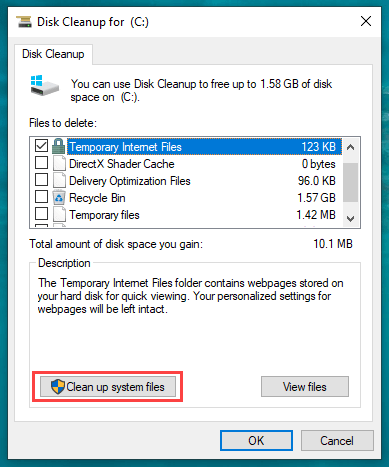

- #Windows 10 setup exe auto delete how to#
- #Windows 10 setup exe auto delete update#
- #Windows 10 setup exe auto delete windows#
Remember to change 11 to the number you have chosen. You can use the following steps, in the case, you want to run Disk Cleanup before the specified schedule:Ĭ:\Windows\system32\cleanmgr.exe /sagerun:11
#Windows 10 setup exe auto delete how to#
How to run Disk Cleanup out of its schedule
#Windows 10 setup exe auto delete update#
If for any reason, you need to change the current settings for the task, open the Task Scheduler, open the folder you created, double-click task, and update the configuration. On the Summary page, click Finish to complete the task.Īfter completing the task, the Disk Cleanup tool will run at the time you specified, deleting all unnecessary files from your computer. (Remember to change the number 11 to the number you that you chose in step 2 to use the settings you have configured.)
Type the path to open the Disk Cleanup tool: C:\Windows\system32\cleanmgr.exe and include the argument /sagerun:11. On Action, select Start a program and click Next. Select the date and time, and click Next. For the purpose of this guide, we'll be choosing Monthly. These options are very flexible as you can set different times, in addition to set specific events to trigger the task. Select when you want the task to run and click Next. Name the task, add a description you like, and click Next. Right-click the newly created folder and click Create Basic Task.  Right-click Task Scheduler Library, click New Folder and name the folder something descriptive like User Defined Tasks. Open Start, do a search for Task Scheduler and click the result to open the utility. Some of the files you can clean up include:Ĭlick the OK button to save and store the settings in the registry. Once the Disk Cleanup Settings opens, check the items you want the tool to remove automatically from your system from the extensive list. This way, you can set different numbers to run the tool with different settings at different times. The number can be anything from 0 to 65535, and it's basically like a filename that points to all the specific settings you want to use. The n number, which is also stored in the registry, indicates the settings you want to use with the tool. In this command, we're using the switch /sagest:n to open the Disk Cleanup settings and at the same time create a registry key that will store the settings you choose. Type the following command and press Enter:
Right-click Task Scheduler Library, click New Folder and name the folder something descriptive like User Defined Tasks. Open Start, do a search for Task Scheduler and click the result to open the utility. Some of the files you can clean up include:Ĭlick the OK button to save and store the settings in the registry. Once the Disk Cleanup Settings opens, check the items you want the tool to remove automatically from your system from the extensive list. This way, you can set different numbers to run the tool with different settings at different times. The number can be anything from 0 to 65535, and it's basically like a filename that points to all the specific settings you want to use. The n number, which is also stored in the registry, indicates the settings you want to use with the tool. In this command, we're using the switch /sagest:n to open the Disk Cleanup settings and at the same time create a registry key that will store the settings you choose. Type the following command and press Enter: #Windows 10 setup exe auto delete windows#
Use the Windows key + X keyboard shortcut to open the Power User menu and select Command Prompt (Admin).






 0 kommentar(er)
0 kommentar(er)
